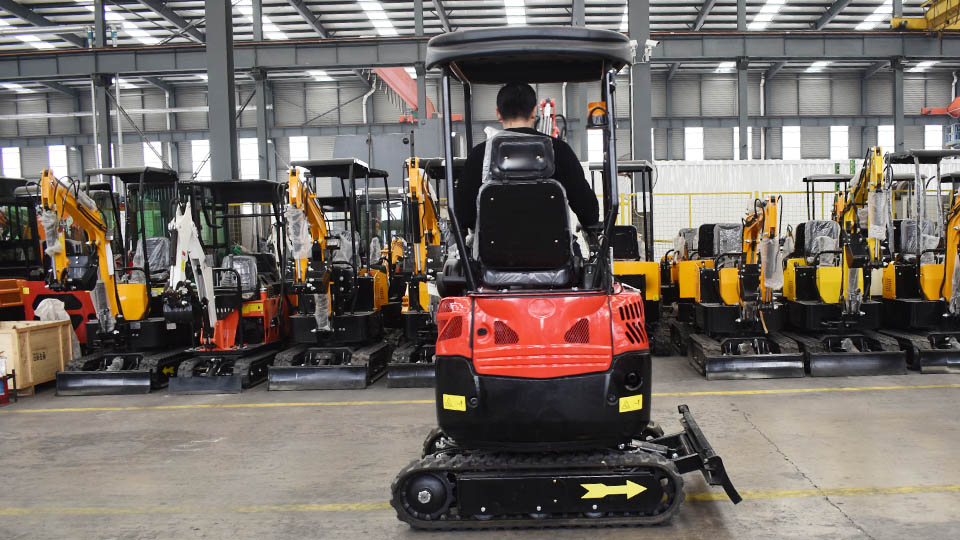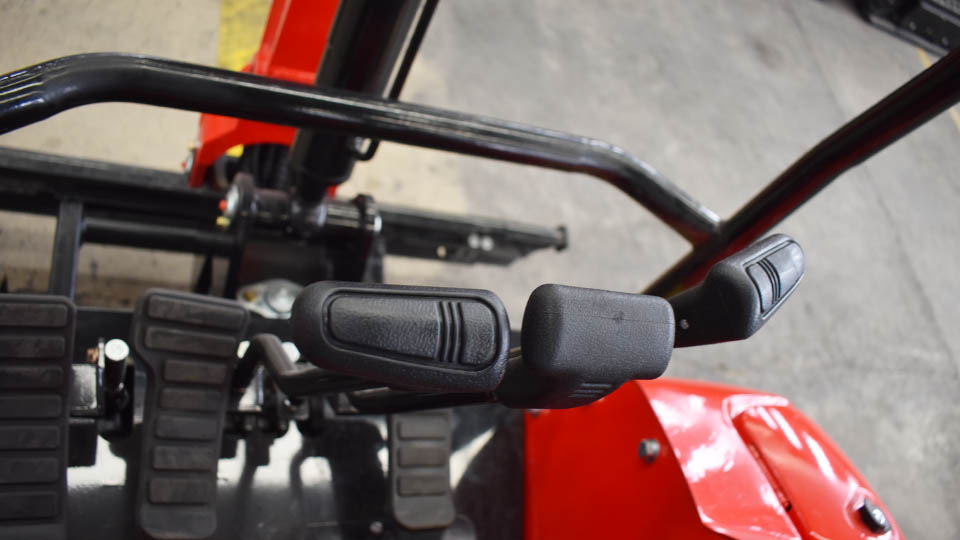Excavator Rental vs. Purchase: Which is Better for You? A Comprehensive Technical and Financial Analysis
Abstract: Excavators are indispensable heavy machinery for a vast array of industries, from construction and demolition to landscaping and utilities. For businesses requiring these powerful tools, a fundamental decision often arises: should the equipment be rented or purchased? This technical article delves into a comprehensive comparison of excavator rental versus purchase, analyzing the critical financial implications, operational advantages and disadvantages, maintenance responsibilities, and long-term strategic considerations. By exploring factors such as utilization rates, project duration, capital expenditure, depreciation, and technological advancements, this article aims to provide a robust framework for informed decision-making, helping businesses determine the optimal acquisition strategy for their specific needs.
1. Introduction
The essential role of excavators in various industries (construction, agriculture, demolition, civil engineering).
The dilemma faced by businesses: outright purchase or flexible rental?
Briefly introduce the complexity of the decision, involving financial, operational, and strategic factors.
Thesis statement: The choice between excavator rental and purchase is a nuanced one, heavily dependent on a business's specific operational needs, financial standing, project pipeline, and risk tolerance, with no single "better" option universally applicable.
2. Understanding the Core Equipment: The Excavator
Brief Technical Overview:
Components: Boom, stick, bucket, cab, undercarriage (tracks/wheels), engine, hydraulic system.
Types: Mini excavators, standard excavators, large excavators, long-reach excavators, wheeled excavators.
Core Functionality: Digging, trenching, lifting, demolition, material handling.
The inherent high cost and complexity of the machinery.

3. The Case for Excavator Rental
3.1. Financial Advantages
Lower Upfront Capital Outlay:*No significant initial investment required. Preserves working capital.
Predictable Project Costs:*Rental fees are fixed and easily assignable to specific projects.
Off-Balance Sheet Debt:*Rental payments are typically operating expenses, not depreciating assets or liabilities on the balance sheet, improving financial ratios.
No Depreciation or Resale Risk:*Avoids the financial loss from equipment depreciation and the hassle/risk of selling used equipment.
Elimination of Maintenance and Repair Costs:*These are typically borne by the rental company (excluding misuse).
No Storage Costs:*Eliminates the need for secure storage facilities when not in use.
No Insurance Costs (of Ownership):*While operational insurance is still needed, the comprehensive insurance for the owned asset is avoided.
Tax Advantages:*Rental payments are fully tax-deductible as operating expenses.
3.2. Operational Advantages
Access to Diverse Equipment Fleet:*Ability to select the exact size and type of excavator needed for each specific job, including specialized attachments.
Access to Latest Technology:*Rental fleets are regularly updated, providing access to newer, more efficient, and technologically advanced machines (e.g., GPS-enabled, hybrid models).
Reduced Downtime:*Rental companies are responsible for maintenance and providing replacement equipment in case of breakdown.
Flexibility and Scalability:*Easily scale up or down equipment needs based on project demand, without long-term commitment.
No Long-Term Commitment:*Ideal for short-term projects, fluctuating workloads, or one-off jobs.
3.3. Disadvantages of Rental
Higher Long-Term Cost (for high utilization):*Over extended periods of continuous use, total rental costs can exceed purchase costs.
No Equity Building:*Rental payments do not build equity in an asset.
Lack of Customization:*Limited ability to permanently customize or modify the equipment.
Availability Issues:*Specific models or attachments might not always be immediately available, especially during peak seasons.
Potential for Varying Quality:*Equipment condition can vary between rental units.
Scheduling and Logistics:*Need to coordinate delivery and pickup with the rental company.

4. The Case for Excavator Purchase
4.1. Financial Advantages
Building Equity/Asset Ownership:*The equipment becomes a depreciating asset on the balance sheet, which can be beneficial for certain financial strategies.
Potential for Resale Value:*The ability to recoup a portion of the initial investment through resale.
Cost-Effective for High Utilization:*If the excavator is used frequently (e.g., 60-70%+ of the time annually), the per-hour cost of ownership can be lower than rental.
Depreciation Tax Benefits:*Depreciation can be deducted for tax purposes, reducing taxable income.
Financing Options:*Ability to secure loans or leases, which can free up capital initially.
4.2. Operational Advantages
Immediate Availability:*Equipment is always on-site and ready for use, eliminating delays.
Familiarity for Operators:*Operators become highly familiar and proficient with a single machine, leading to increased efficiency and reduced errors.
Customization and Specialization:*Ability to permanently install specialized attachments or modifications tailored to specific tasks.
Pride of Ownership:*A less tangible but sometimes significant factor for businesses.
Greater Control:*Full control over maintenance schedule, usage, and operator assignment.
4.3. Disadvantages of Purchase
High Upfront Capital Outlay:*Requires substantial initial investment, potentially impacting cash flow.
Depreciation Risk:*The equipment loses value over time, and rapid technological advancements can accelerate this.
Ongoing Maintenance and Repair Costs:*The owner bears all costs, including parts, labor, and unscheduled repairs.
Storage and Security Costs:*Requires secure storage facilities, especially when not in use.
Insurance Costs:*Comprehensive insurance coverage for the asset is necessary.
Technological Obsolescence:*Owned equipment can become outdated, leading to reduced efficiency compared to newer models.
Resale Hassle and Risk:*The burden of finding a buyer and potentially accepting a lower-than-desired price.
No Flexibility:*Stuck with a specific machine, even if project needs change.
5. Critical Factors for Decision-Making: A Technical and Financial Framework
5.1. Utilization Rate (The Most Crucial Factor)
Rule of Thumb:*Generally, if an excavator is needed for more than 60-70% of working hours in a year, purchase often becomes more economical.
Calculation:*How to estimate utilization based on project pipeline, typical hours per project, and downtime.
Impact on Hourly Cost:*Illustrate how high utilization lowers the effective hourly cost of ownership.
5.2. Project Duration and Predictability
Short-Term/Sporadic Projects:*Strongly favors rental.
Long-Term/Continuous Projects:*Favors purchase.
Unpredictable Workload:*Rental offers hedging against market fluctuations.
5.3. Capital Availability and Cash Flow
Limited Capital:*Rental is often the only viable option for startups or small businesses.
Healthy Cash Flow:*Purchase may be feasible, but consider the opportunity cost of tying up capital.
5.4. Maintenance Capabilities and Resources
In-House Expertise:*If a company has skilled technicians and a dedicated maintenance facility, ownership is more viable.
Outsourcing:*If maintenance is outsourced, factor in the cost, which can be significant.
Preventive vs. Reactive Maintenance:*The importance of a robust PM program for owned equipment.
5.5. Specialized Equipment Needs
Highly Specialized/Rarely Used:*Rental is almost always preferred due to limited usage.
Standard/High-Demand:*Both options are viable, but purchase might be preferred if continuously needed.
5.6. Tax Implications and Financial Strategy
Operating Lease vs. Capital Lease vs. Purchase:*Briefly explain these financial instruments and their accounting/tax treatments.
Section 179 Deduction / Bonus Depreciation (US context):*Explain how these can reduce the upfront tax burden of purchased assets. *(Note: Tax laws are complex and change; always consult a tax professional.)*
5.7. Age and Condition of Equipment
New vs. Used Purchase:*Pros and cons of each.
Rental Fleet Quality:*The reputation of the rental company regarding equipment age and maintenance.
5.8. Transportation and Logistics
Owned Equipment:*Requires own transport or reliance on external haulers.
Rental Equipment:*Delivery and pickup typically handled by the rental company (often with a fee).
6. Hybrid Strategies and Emerging Trends
Long-Term Rentals/Lease-to-Own:*Offers a middle ground, combining flexibility with a path to ownership.
Rent-to-Rent:*Subcontracting owned equipment when not in use (less common for individual excavators but possible).
Technological Integration:*Telematics and predictive maintenance are making both rental and ownership more efficient.
Electric/Hybrid Excavators:*Their higher upfront cost might make rental more appealing for early adoption.
7. Developing Your Decision Matrix
Create a checklist of key factors (utilization, project length, budget, maintenance capacity, specialized needs).
Assign weights to each factor based on business priorities.
Use a scoring system to evaluate rental vs. purchase for specific scenarios.
Conduct a detailed Cost-Benefit Analysis (CBA) or Total Cost of Ownership (TCO) calculation for various scenarios.
TCO Calculation Elements for Purchase: Purchase price, financing costs, depreciation, insurance, storage, fuel, maintenance (parts, labor), repairs, operator wages, resale value.
TCO Calculation Elements for Rental: Rental fees (daily/weekly/monthly), delivery/pickup fees, fuel, operator wages, damage waivers.
8. Conclusion
Reiterate that the "better" option is entirely situational.
Emphasize the importance of a thorough, data-driven analysis considering both technical and financial aspects.
Summarize the primary drivers for each choice:
Rental is generally better for: Low utilization, short-term projects, limited capital, need for diverse equipment, avoiding maintenance burden.
Purchase is generally better for: High, consistent utilization, long-term projects, ample capital, desire for full control, in-house maintenance capabilities.
Conclude that smart equipment acquisition is a strategic imperative that directly impacts a business's profitability, efficiency, and long-term sustainability.
References (Optional but Recommended):
Financial accounting principles (e.g., GAAP, IFRS related to asset capitalization and depreciation).
Equipment manufacturers' specifications and cost data.
Rental industry reports and statistics.
Articles or studies on heavy equipment total cost of ownership.
Tax advisories regarding equipment deductions.
Post time:Sep-25-2020
